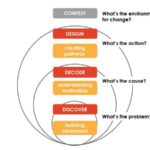Why Australia can lead the world in making products and services better
User focused design has helped with the success of products like the iPhone. Tom Voirol explains how, by implementing this approach, Australian organisations and users can reap the significant benefits.
You may not have heard the term, but user experience design (or UX) is getting increased traction in developing services and products that are more useful, usable and even desirable. It is the practice of putting the users and their needs, wants and preferences at the centre of the design process.
This sounds like an obvious thing to do, and you’d be forgiven for thinking that this is how most products and services are developed today. Unfortunately, as evidenced by convoluted telephone menus, labyrinthine banking procedures and mysterious control panels on microwave ovens, this is not always the case.
The success of products like the iPhone haven, however, started grabbing the attention of businesses and governments. These products demonstrate the return on efforts invested into the user experience. If done right, it can lead to commercial success through increased customer loyalty and by building a moat between your products and the competition.
When the iPhone first launched, it lacked many features shared by its competition. There was no copy/paste functionality, no keyboard and no ability for owners to install programs of their choosing. Nevertheless, it took the world by storm because people did not mind the device doing fewer things, as long as it did its core functionality intuitively and efficiently. And that it certainly did. When was the last time you ever saw someone reading the manual of an iPhone before managing to get it working?
But its not just the success stories that make organisations sit up and listen. Customers are less tolerant of poor customer service and product experiences and, thanks to social media, we all now have the power to share our disappointment (or, sometimes, anger) to a potentially very large global audience. This puts poor design very visibly into the public space.
How does user experience design work? At its core, it encompasses three steps:
1. Understand users
2. Design for users
3. Test with users
To truly understand your users, you have to undertake in-depth research. This doesn’t just mean asking them what they would like from your new website, mortgage plan or complaints procedure; it means truly understanding their actions, attitudes, desires, needs and wants.
Designing for them will obviously look very different whether you are working on a new lawnmower, online bank, or sign-up process, but what they all have in common is that very early on you will want to create rough prototypes which you can test.
Testing is at the core of UX design. Even the best designers test extensively, preferably with real users. Insights gained here feed back into the design, deepening the understanding of the users’ psyche and closing the loop.
Three things above all make user-centred design succeed:
1. asking people rather than assuming things
2. curiosity and empathy, and
3. challenging the orthodoxy
From the perspective of an immigrant, having arrived on these shores almost a decade ago, I see all of these as prime Australian traits. My experience of other cultures is that they often make assumptions based on learned behaviours or what they heard from others.
Australians, on the other hand, display more of a willingness to hear a person’s story from their point of view. They – or we, as I now consider myself – are good listeners and we delight in exploring the minutiae of other people’s experiences. We also don’t just accept that things should be done in a particular way because they have always been done like that.
This has no doubt contributed to this country having produced a very strong community of user experience designers. The annual UX Australia conference attracts an international crowd and can compete with the best events on the planet. Many Australian practitioners produce world-class work and are in high demand overseas.
Our country has the goods to lead the world in creating better products and services. If more government agencies and companies recognise the benefits of user-centred design, Australian organisations and users can reap significant benefits.
Tom Voirol is an online strategist and head of user engagement at global digital consultancy, Reading Room. He works at the intersection of user experience, social media and mobile and helps clients in government and corporations improve their customer engagement. He also holds an MBA from MGSM and lectures social media strategy at the Australian Direct Marketing Association.




